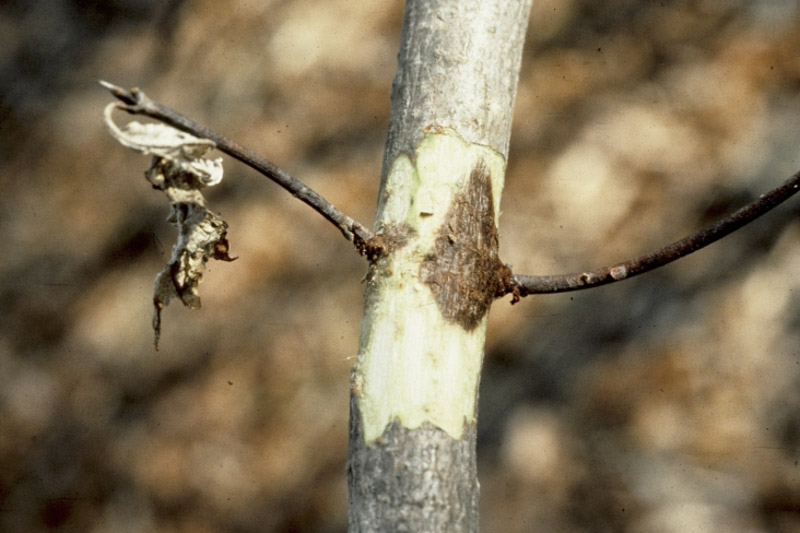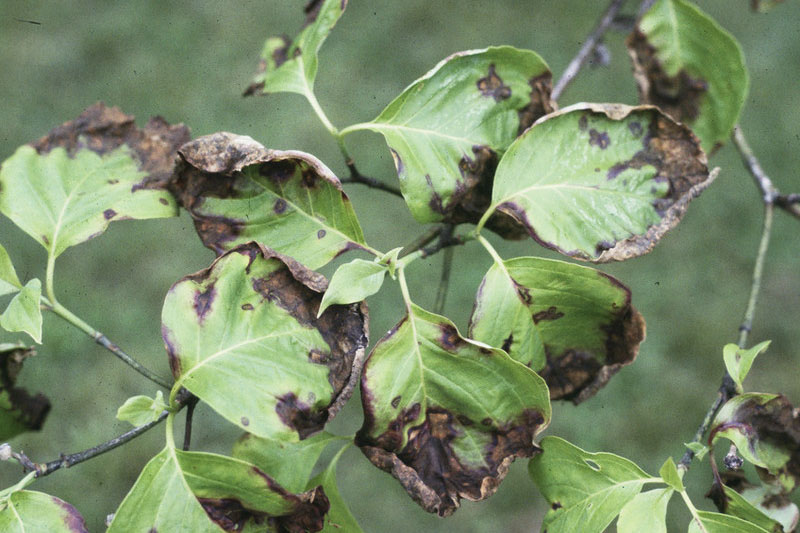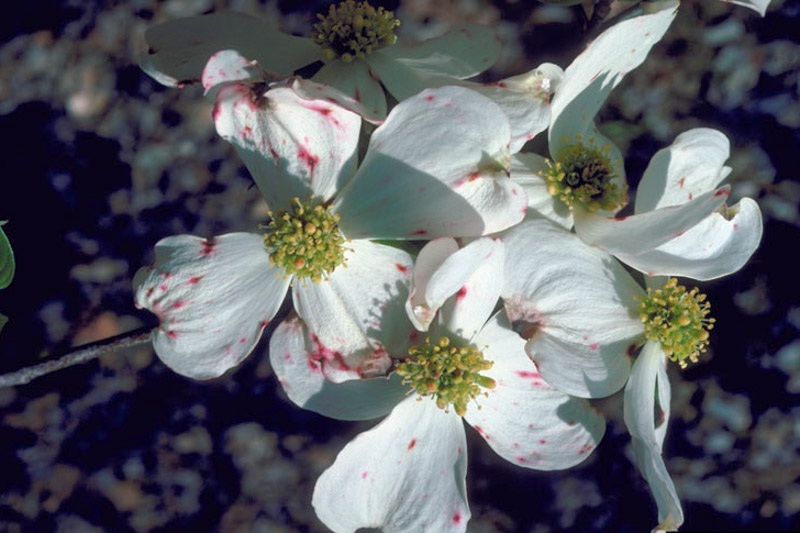What is Dogwood Anthracnose?
Dogwood Anthracnose is a fungal disease caused by the pathogen Discula destructiva. It is known to cause leaf spots, stem cankers, and even death of the affected trees if not managed properly.
Regions Impacted
The fungus Discula destructiva, originally from Asia, was introduced to the eastern United States in the late 1970s. It rapidly swept through the area, severely impacting native populations of flowering dogwoods. Lacking natural defenses against this non-native pathogen, the trees were highly susceptible, allowing the fungus to proliferate uncontrollably.
Host plants
Dogwood anthracnose primarily affects Flowering Dogwoods (Cornus florida) and Pacific Dogwoods (Cornus nuttallii).
What Causes Dogwood Anthracnose?
The fungus Discula destructiva infects the leaves, twigs, and branches of susceptible dogwood species.
Several factors contribute to the spread and severity of Dogwood Anthracnose. Some of these factors are:
- Humidity: High humidity levels create an ideal environment for the fungus to grow and spread.
- Poor Air Circulation: Areas with limited air movement are more susceptible as they hold moisture, providing a hospitable condition for the fungus.
- Overhead Irrigation: Watering dogwoods from above can splash fungal spores from the soil or from infected leaves to healthy ones, facilitating the spread of the disease.
- Shade: The disease tends to be more severe in shaded areas where leaves stay wet for extended periods.
- Plant Stress: Trees that are stressed due to environmental conditions like drought or poor soil quality are more susceptible to infection.
- Seasonal Conditions: Cool, wet springs are particularly conducive to the rapid development and spread of the disease.
- Infected Plant Debris: The fungus can overwinter in fallen leaves or infected plant material, which is a source for future infections.
- Proximity to Infected Plants: Being near plants that are already infected significantly increases the risk of the disease spreading.
- Inadequate Disease Management: Failure to promptly remove and properly dispose of infected material can contribute to the recurrence of the disease.
Understanding these factors can help in the effective management and prevention of Dogwood Anthracnose.

What are the Symptoms?
The symptoms can vary depending on the stage of the disease, but common signs include:
- Leaf Spots: Initial symptoms often manifest as small, tan spots with irregular purple margins on leaves, which can eventually enlarge and merge, leading to large blotches.
- Blighted Leaves: As the disease progresses, entire leaves may become blighted, turning brown or tan and eventually falling off prematurely.
- Twig Dieback: The disease can move from the leaves into the twigs, causing twig tips to die back.
- Canker Formation: On the stems and branches, you may notice sunken, discolored areas known as cankers. These can lead to branch dieback and reduced vitality of the tree.
- Flower Blight: While less common, the disease can also affect the bracts and flowers, causing them to become discolored and distorted.
- Discolored Bark: The bark on infected branches may become discolored and eventually peel or crack, revealing necrotic tissue underneath.
- Fruit Damage: Though less common, the disease may also affect the fruit, causing it to appear mottled or rotten.
- Overall Decline: Severely infected trees will show a general decline in health, including reduced growth and susceptibility to other diseases or pests.
- Tree Mortality: In extreme cases, particularly with younger or already stressed trees, Dogwood Anthracnose can lead to tree death.
Early detection is crucial for effective treatment and control of the disease. If you notice these symptoms, it’s advisable to take immediate action to manage and limit the spread of the disease.

Disease Cycle
The disease cycle of Dogwood Anthracnose is complex and can vary depending on environmental conditions and the health of the host plant. However, there are some general stages:
- Overwintering: The fungus that causes Dogwood Anthracnose (Discula destructiva) typically overwinters in infected leaf debris or cankers on twigs and branches.
- Spring Sporulation: With the arrival of moist, warm weather in spring, the fungal spores are produced and become airborne, or they are splashed onto new foliage by rain.
- Initial Infection: These spores land on the leaves or young twigs of susceptible trees and penetrate the tissue, especially in humid or wet conditions.
- Symptom Development: Once the fungus establishes itself, symptoms such as leaf spots and blights start to appear within a few weeks, depending on conditions.
- Secondary Spores: Infected leaves can produce secondary spores that are dispersed by wind or rain, leading to further infections within the same tree or neighboring trees.
- Progression: Over time, the disease progresses from the foliage to the twigs and branches, creating cankers and leading to dieback.
- Late Summer/Fall: As leaves drop in the autumn, they contribute to the debris that harbors the fungus through the winter, completing the cycle.
- Multiple Cycles: In favorable conditions, multiple infection cycles can occur in a single growing season, exacerbating the disease’s impact.
Understanding the disease cycle is crucial for effective management, as interventions like fungicide applications are most effective when timed to disrupt key stages of the cycle.

How to Control and Prevent Dogwood Anthracnose?
Controlling and preventing Dogwood Anthracnose involves a multi-pronged approach that focuses on cultural practices, chemical treatments, and choosing disease-resistant varieties. Here are some strategies:
Cultural Practices
- Proper Spacing: Ensure that trees are spaced adequately to improve air circulation, which helps leaves dry more quickly and reduces the likelihood of infection.
- Pruning: Remove dead or infected branches to reduce disease pressure. Make sure to sanitize pruning tools between cuts.
- Leaf Removal: Rake up and dispose of fallen leaves from around the base of the tree, as these can harbor overwintering spores.
- Watering: When watering, aim to moisten the soil rather than the foliage. Damp leaves are more susceptible to infection.
- Site Selection: If planting new trees, choose well-drained sites, as the disease favors wet, poorly drained locations.
- Mulching: Apply mulch around the base of the tree, but not touching the trunk, to prevent soil from splashing onto the lower leaves.
Chemical Treatments
- Fungicides: Apply fungicides in the spring when new leaves are emerging. Fungicides containing chlorothalonil, mancozeb, or propiconazole are often effective.
- Timing: Multiple applications may be needed during the growing season, especially during wet conditions.
- Consult Local Guidelines: Always consult local agricultural extensions for the most current and localized recommendations for fungicide use.
Disease-Resistant Varieties
When it comes to dogwood trees, selecting disease-resistant varieties is an effective way to manage Dogwood Anthracnose. While no variety is completely immune, some are far less susceptible to the disease. Here are some of the more resistant dogwood varieties.
While every effort has been made to describe these plants accurately, please keep in mind that height, bloom time, and color may differ in various climates. The description of these plants has been written based on numerous outside resources.


